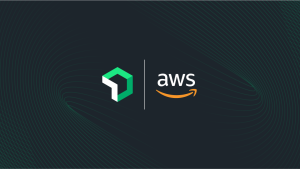In today's complex digital business environment, companies often grapple with siloed data and fragmented insights when making critical decisions. This fragmented approach can be even more evident between technical teams (IT, engineering) and business teams (digital leads, project managers, CXOs) to effectively manage the software powering digital business processes. This divide often originates from the team’s differing focuses and objectives; technical teams concentrate on metrics related to software functionality, while business teams look at the performance of digital business processes. This gap not only creates frustrations but can also lead to serious issues, such as software changes that negatively impact business metrics or in business decisions that overlook the technical realities. Both of these obstacles can result in missed revenue opportunities.
This is why New Relic recently introduced Pathpoint, a business observability solution that uniquely combines business and technical metrics into a single source of truth, giving IT/engineering and business teams the ability to understand the business impact of the software they build and operate. More than that, Pathpoint enables them to share real-time insights with business partners across industries such as retail, banking, fintech, and healthcare to deliver real-time financial insights into every user touchpoint. This drives operational efficiency, enables analysis of the financial impact of issues, and aligns service performance with business outcomes.
What is business observability?
Business observability isn't just about monitoring; it's about a deep understanding of your entire business ecosystem in real time. From the code running on your servers and the underlying infrastructure to customers clicking “buy” on your website. It's about drawing a clear line between your technology stack and your financial outcomes. Imagine being able to trace how every click, every line of code, and every infrastructure fluctuation directly impacts your bottom line. That's the power of business observability.
What is New Relic Pathpoint?
At its core, New Relic Pathpoint is a bridge that links technical metrics with the business strategy needed to effectively operate software powering digital processes. It's not just about monitoring system health and performance; it’s about understanding these aspects in the context of user-impacting business stages. Pathpoint goes beyond conventional monitoring by modeling system-level data from APM 360 in direct correlation with user-impacting stages to provide real-time insights. This allows technical teams to provide their business counterparts with visibility into critical metrics that directly impact the business, such as revenue lost during an outage.
This level of visibility also allows business executives to make data-driven decisions about software investments based on how business processes are functioning, including all internal and external dependencies. This helps organizations prioritize internal systems that affect revenue and easily pinpoint and address issues and enhance the overall customer experience across all channels to maximize return on investment (ROI).
Imagine an ecommerce platform. With Pathpoint, engineering teams can monitor the entire ecommerce process in real time—from a shopper's site entry to checkout and eventual product delivery. Each customer journey step is linked to the underlying software services, along with detailed performance and uptime insights for those services, providing detailed performance and uptime business insights. Pathpoint empowers both technical and business teams of any significant changes in business metrics. Engineers can quickly diagnose if issues in underlying software services are causing these changes, utilizing the full power of the New Relic observability platform to pinpoint and address the root cause, fast, before it affects the bottom line.
Pathpoint isn't just a solution; it's a strategic asset
New Relic users can leverage Pathpoint to efficiently manage and customize their journeys, including customer browsing behaviors, search queries, product selection, payment processing times, and post-sale activities to enable rapid assessment of the financial implications of system performance. By integrating critical business metrics with detailed telemetry data executives can now see a clear picture of how system operations affect financial outcomes.
Additionally, Pathpoint facilitates deep analysis of user interactions and conversion patterns to reduce customer churn and align, set, and monitor service-level objectives to minimize downtime in line with financial goals and prioritize tasks based on their business value. This results in more effective resource allocation and improved cost control, streamlining operations and maximizing efficiency.
Key capabilities and benefits include:
- Make finance-based decisions: Assess the financial impact of system issues by viewing telemetry data alongside critical business metrics to make better decisions.
- Enhance customer experiences and revenue: Analyze system health in relation to actual user-impacting stages and conversion patterns to reduce churn and boost revenue.
- Minimize financial impact of downtime: Easily align, set, and monitor service-level objectives with your business goals for improved service performance that aligns with organizational priorities.
- Optimize resources and costs: Strategically group applications, services, and infrastructure according to business functions to prioritize budget/spend based on ROI and value.
- Use generative AI-powered insights (now in early access): Use natural language prompts with New Relic AI to easily identify cost-saving opportunities and uncover hidden revenue potential.
New Relic Pathpoint is our commitment to transforming how businesses understand and optimize every aspect of their customer journey. It's about turning data into actionable insights and making every customer interaction a strategic opportunity for growth.
As businesses navigate the digital landscape, Pathpoint can help guide companies toward more efficient, customer-centric, and data-driven operations.
Ready for the future of business observability?
Get started with Pathpoint today and turn your data into dollars. Don’t have a New Relic account yet? Sign up now, with no credit card required
The views expressed on this blog are those of the author and do not necessarily reflect the views of New Relic. Any solutions offered by the author are environment-specific and not part of the commercial solutions or support offered by New Relic. Please join us exclusively at the Explorers Hub (discuss.newrelic.com) for questions and support related to this blog post. This blog may contain links to content on third-party sites. By providing such links, New Relic does not adopt, guarantee, approve or endorse the information, views or products available on such sites.



